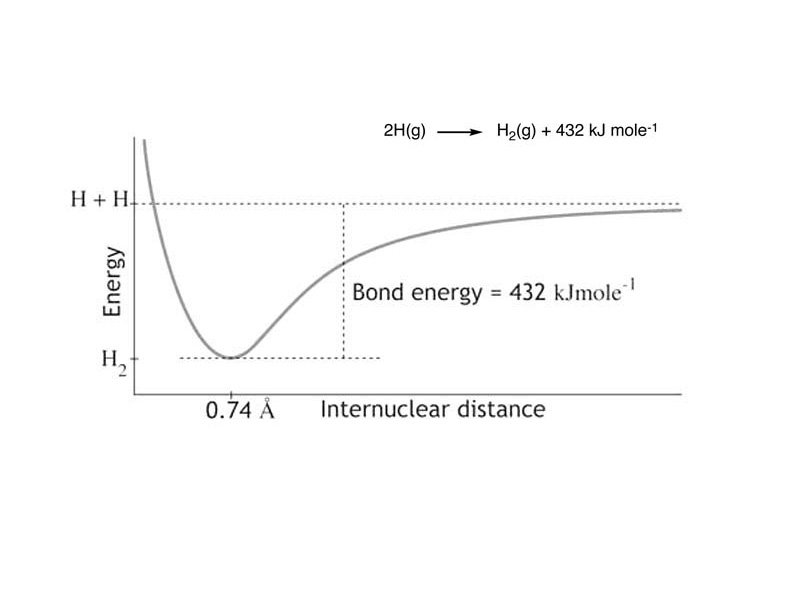Interdisciplinary Note (12 of 20)
The valence electrons shared between atoms in a covalent bond have localized themselves in the space between the two atoms. Let's take a look at this as if it were a simple mechanical and electrostatic system. (Why are electrons localized there? That's a quantum mechanics question.). Looking at it from the point of view of basic physics, you have a scenario with the negative charge density in the middle between the atoms, the bonding electrons acting like a kind of glue, attracting the positive charge on both sides, the effective nuclear charge of each atom. Imagine trying to pull the atoms apart. The bonding electrons pull back. And if you tried to push the atoms together, eventually you'd get them close enough that their nuclear charges would repel. It takes work to pull them apart. It takes work to push them together. There's a distance in the middle where it settles in. This is the length of the bond. If you pulled it a little bit and let go, the bond would vibrate like a mass-spring.
Bond dissociation energy is the binding energy of two atoms in a covalent bond. Imagine pulling the atoms apart. It takes work. Eventually, if you do enough work, it starts to get easier and you can completely separate the atoms. The total energy you had to input is the bond dissociation energy.
Molecular orbital theory gives an accounting of how the bond is even stable. Classical physics has no explanation for why the electron density, the bonding electrons, have localized within the region between the two nuclei. However, if we accept this premise as a given, classical physics can help us model the dynamics of the bond and understand bond dissociation energy. The electrons within the internuclear space, the bonding electrons, exert electrostatic force, holding the nuclei of the bonded atoms within the chemical bond. Bonding electrons are like a glue between the nuclei.
To understand the energy description of the covalent bond, it can be helpful to picture bond formation, the reverse of bond dissociation. Picture two unbonded atoms coming together to form a bond. As the two atoms near one another, electron density migrates into the internuclear distance (the space between the atoms), drawing the nuclei inwards. Picture the bonding electrons, a negative charge density, pulling the atoms together, as they fall into a potential energy well. Bond formation is an electrostatic potential energy decrease. As a bond forms, the two atoms fall into a well of binding energy.
